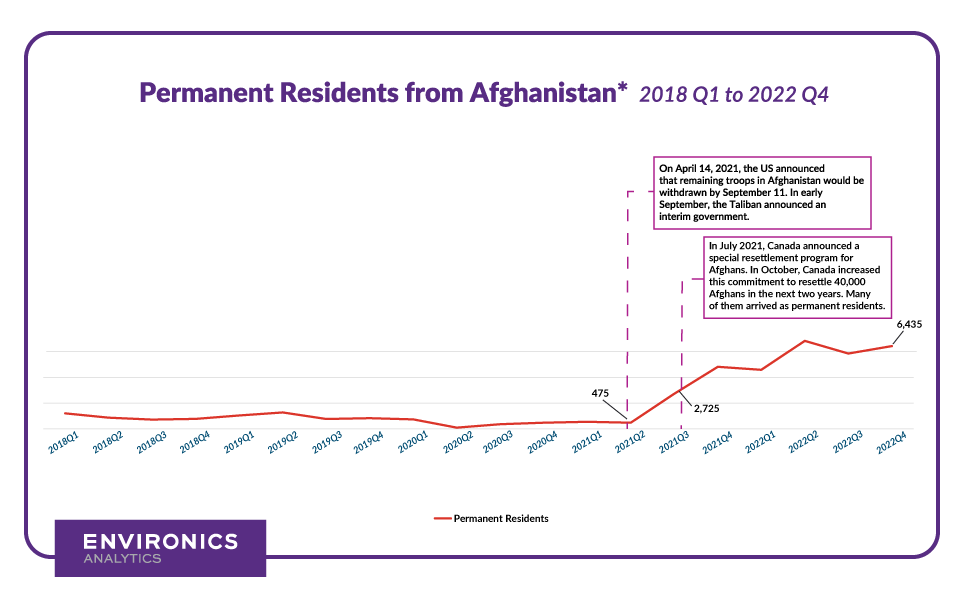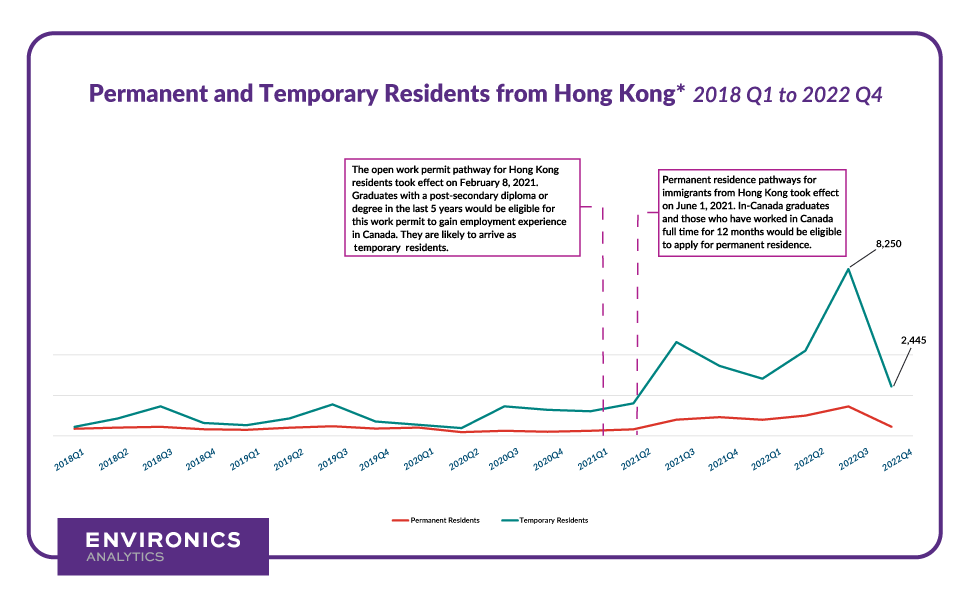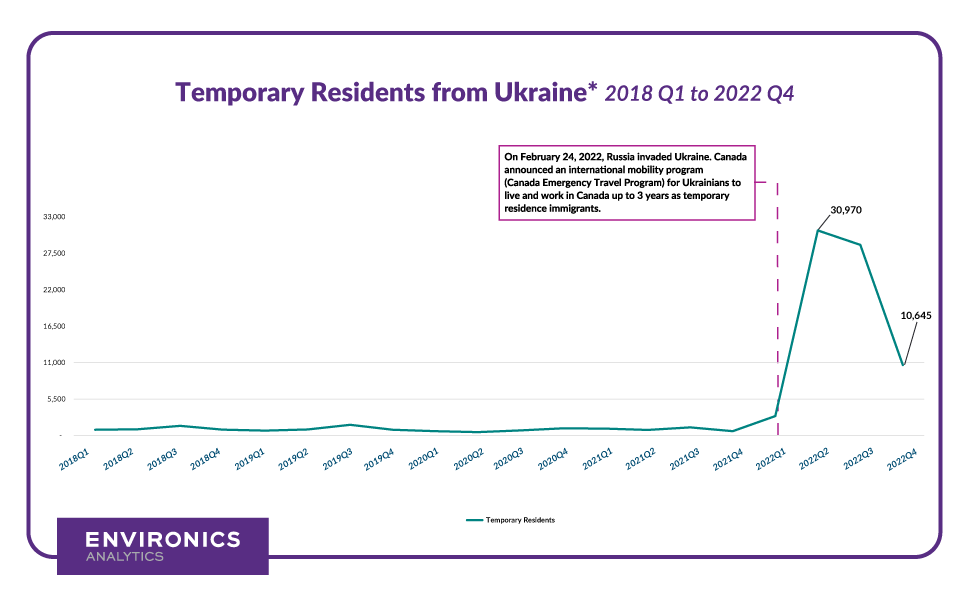
A Soft Place to Land: Canada’s Evolving Role in Supporting Newcomers and Refugees
Canada has seen an influx in immigration since 2021, resulting from policies introduced as pathways to temporary and permanent residence.
There has been a significant increase in newcomers, particularly from Afghanistan, Hong Kong and Ukraine, as part of the Canadian government’s commitment to supporting migrants affected by political upheaval and ongoing war and conflict.
While some immigration support measures may be temporary, public policy pathways to permanent residence status in Canada are available depending on the circumstances for each newcomer group.
To understand the effects of the federal government’s policies on recent immigration, we used the NewToCanada demographic database, analyzing immigration trends between the first quarter of 2021 to the fourth quarter of 2022. It is important to note that in 2022, while 60 percent of all permanent and temporary permit approvals were for persons with no prior Canadian experience, most of the immigrants from Afghanistan, Hong Kong and Ukraine had no prior experience in Canada. The story of urgency is quite telling in the data: in as little as three to five months after the country-specific policies went into effect, temporary and permanent migration from Afghanistan, Hong Kong and Ukraine spiked drastically.
Understanding more about these newcomers will help governments and businesses develop the goods and services required today and in the years to come.
The road to resettling Afghan refugees
Since July 2021, Canada has been working to resettle at least 40,000 Afghan refugees affected by the political situation in Afghanistan through special immigration programs. The Government of Canada also continues to explore other options and pathways, such as the Economic Mobility Pathways Pilot, which combines refugee resettlement and economic migration.
Afghan refugees responded immediately after the special resettlement programs were announced, with permanent residence immigration jumping from 475 to more than 2,700 newcomers1 (+474%) in Q3 of 2021 and peaking over 6,400 in Q4 of 2022.

Opening doors to opportunities for recent Hong Kong post-secondary graduates
In June 2020, China adopted a national security law in Hong Kong in response to pro-democracy protests. Canada has committed to facilitating migration from Hong Kong by introducing a temporary residence open work permit policy along with two pathways to permanent residence status in Canada.
Hong Kong temporary residence immigrants to Canada increased around five months after the open work permit policy took effect.
Temporary residents from Hong Kong peaked at more than 8,000 in Q3 of 2022 and dropped to around 2,400 in Q4.2 Canada may continue to see more immigrants from this country while the open work permit policy remains in effect until expiry in February 2025.

Welcoming Ukrainians to safety
Following Russia’s invasion of Ukraine in February 2022, Canada swiftly introduced the Canada-Ukraine Authorization for Emergency Travel measures to help Ukrainians and their families find a safe and temporary place to stay during the conflict. As temporary residents in Canada, Ukrainians can also apply for open work permits for almost any employer in Canada.
Given the urgency of the situation, Ukrainians fled to Canada almost instantly after the measures were introduced. Nearly 31,000 Ukrainians were granted temporary work permits in Q2 of 2022 and 10,600 arrived later in Q4.
One year later, with the war still ongoing in Ukraine, Canada continues to work with provinces, territories and organizations towards expanding services for Ukrainian newcomers.

Understanding the impacts and opportunities
Immigration continues to play a vital role in the growth and evolution of Canada. It underpins the country’s rich social, cultural and economic fabric, and it continues to contribute to the development of several crucial frameworks and infrastructures across the country.
Businesses, marketers and analysts need to carefully look at immigration data—such as that of Afghanistan, Hong Kong and Ukraine—through the lens of serving newcomer communities and their short- and long-term needs.
It is important to understand that the diversity of the immigrant population goes beyond ethnic origins and comprises various demographic characteristics and experiences. There are challenges to consider when trying to connect with new markets, taking into account the fast-growing immigrant population across different parts of Canada.
Overall, across the private and public sectors, newcomer support requires changes that demonstrate a better understanding of current and future immigrants. This includes decision-making, planning and communications that are both culturally-appropriate and sensitive to the newcomers’ circumstances.
With data and analytics, businesses and organizations are better equipped to reveal gaps, identify opportunities and explore possibilities to help newcomers get a fresh start in a new country.
Related Content
1 Total permanent residence immigrants from Afghanistan.
2 Temporary residence immigrants from Hong Kong are split between students and temporary workers. Temporary residents from Hong Kong decreased in Q4 of 2022 due to a majority who arrived on study permits of which most were enrolled in Q3 the same year.

